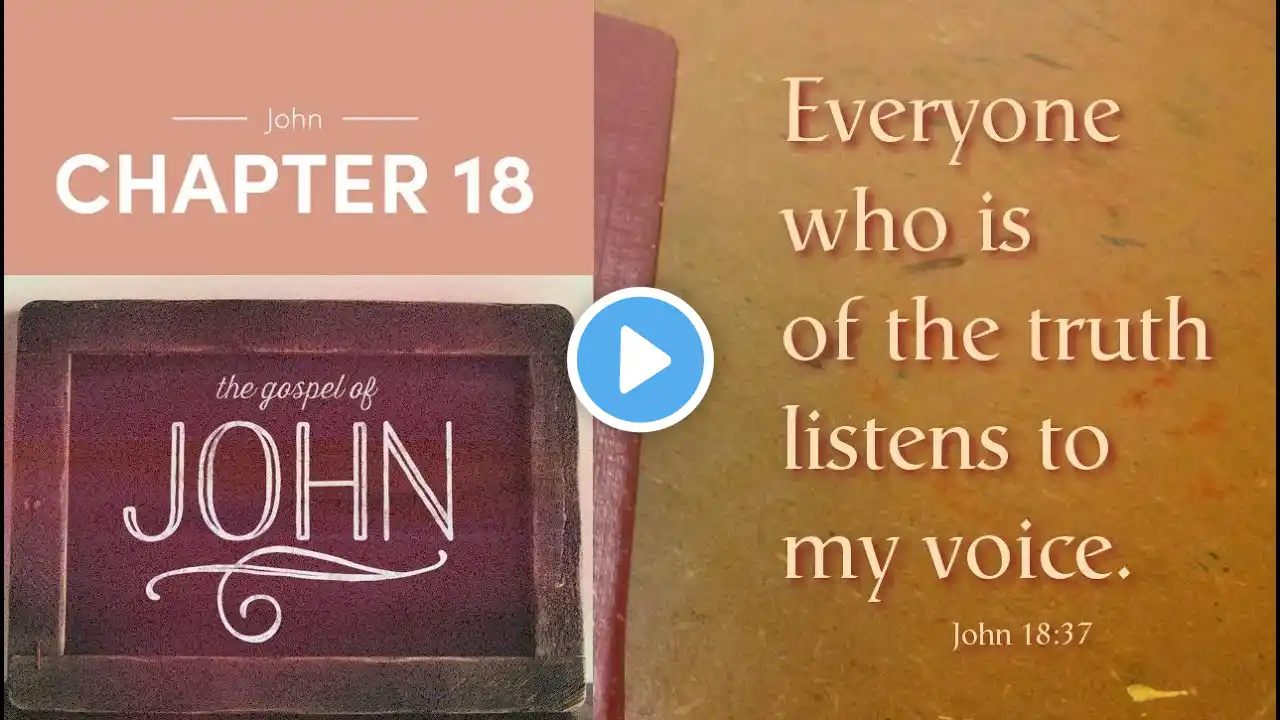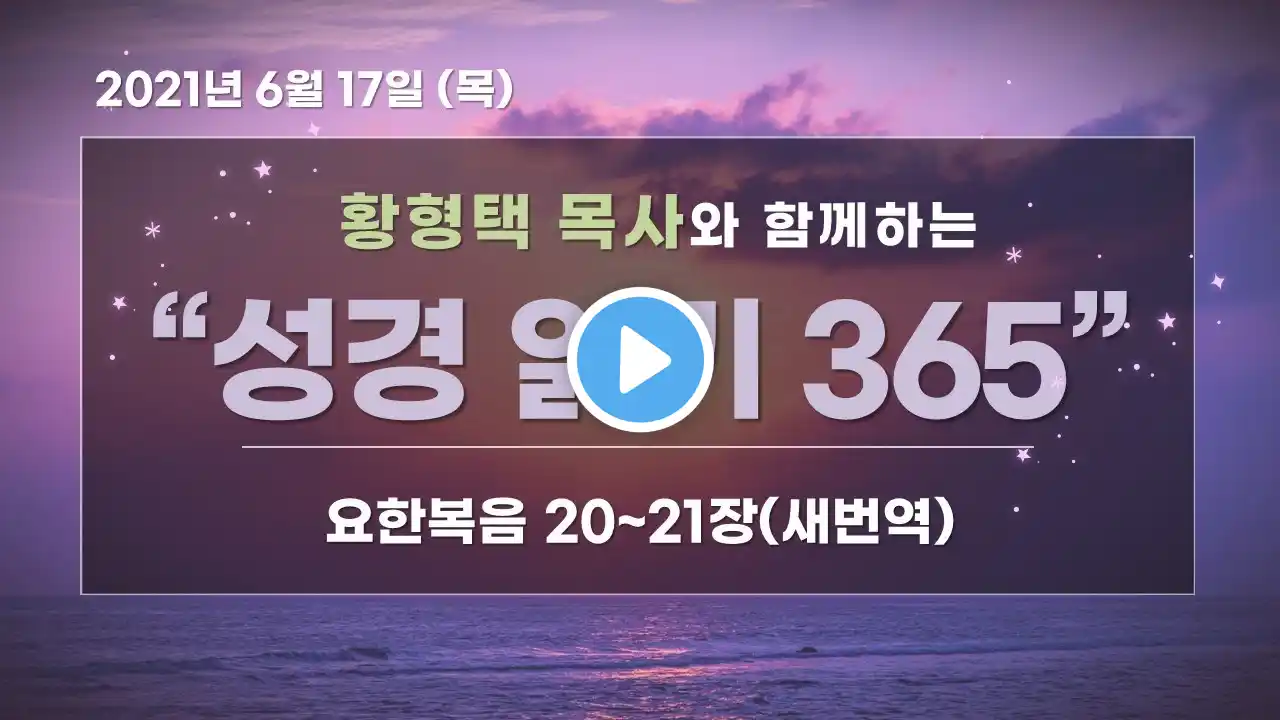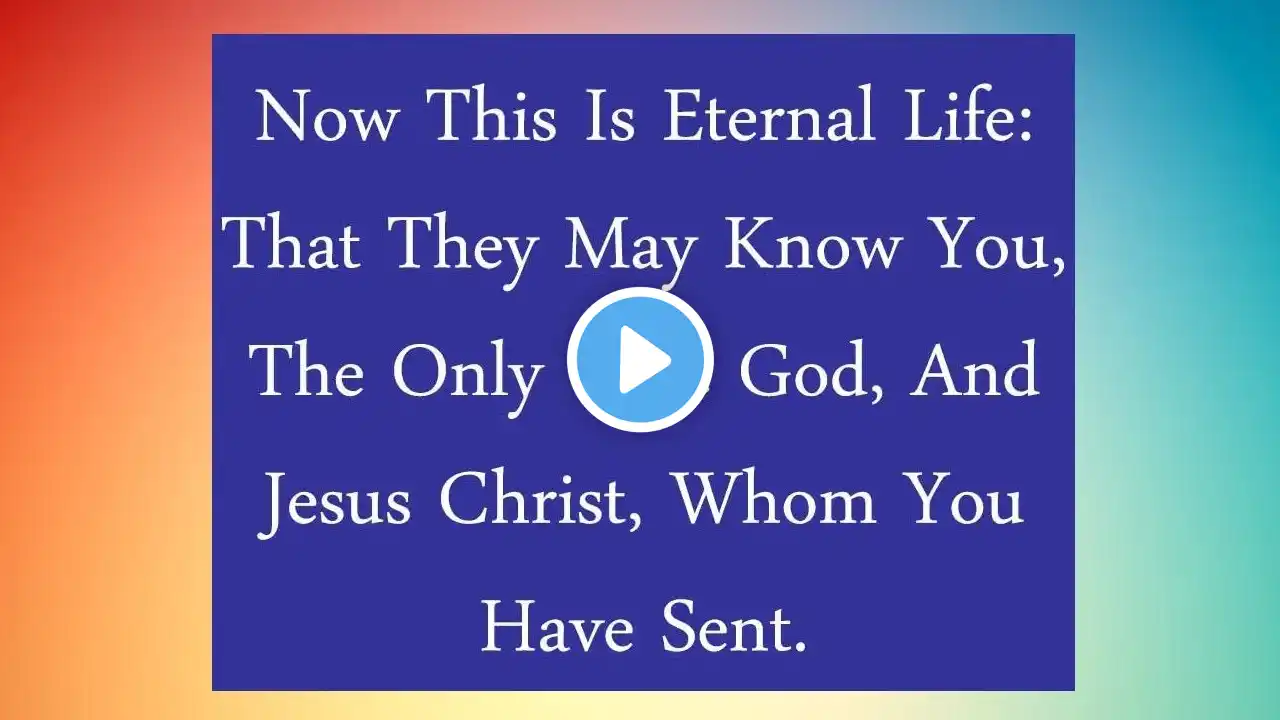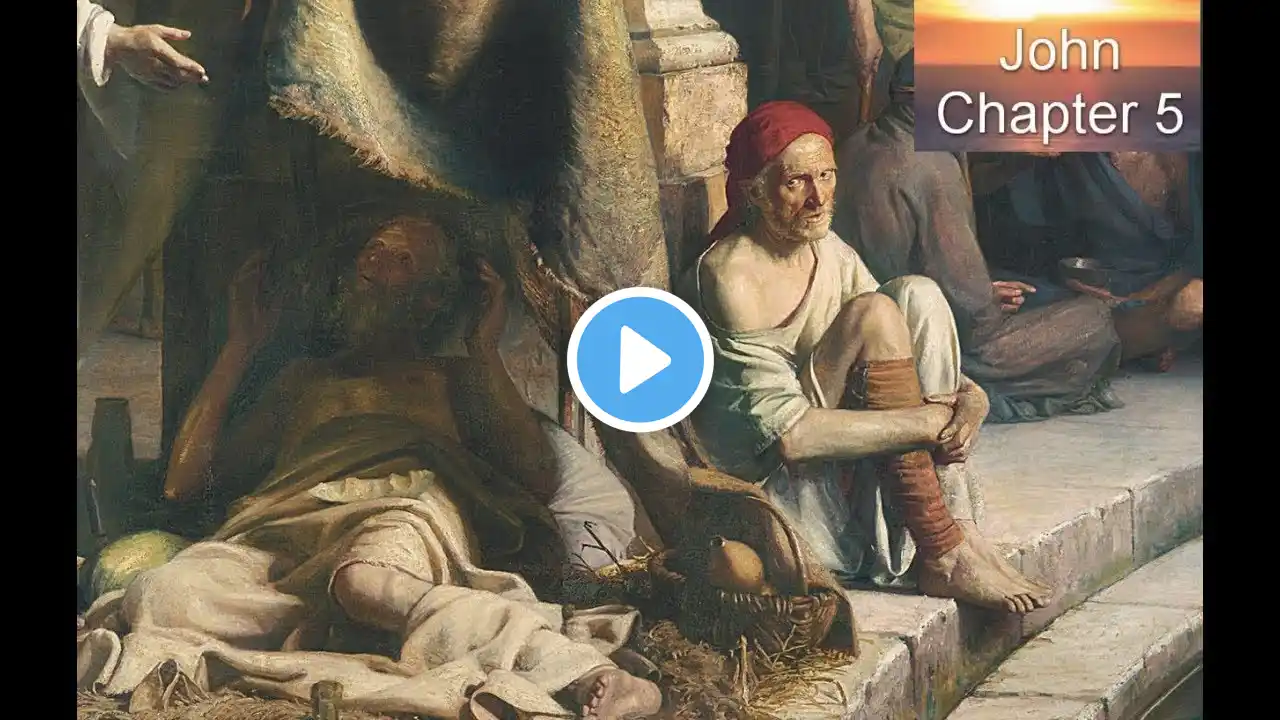![요한복음 1-21장 [새번역] John ["주님께서는 모든 것을 아십니다. 그러므로 내가 주님을 사랑하는 줄을 주님께서 아십니다"...예수께서 그에게..."내 양 떼를 먹여라."]](https://krtube.net/image/_NqTWmwmctU.webp)
요한복음 1-21장 [새번역] John ["주님께서는 모든 것을 아십니다. 그러므로 내가 주님을 사랑하는 줄을 주님께서 아십니다"...예수께서 그에게..."내 양 떼를 먹여라."]
Author, Date, and Recipients John the son of Zebedee wrote this Gospel He was a Palestinian Jew, one of the 12 disciples, and a member of Jesus’ inner apostolic circle He was referred to as the disciple “whom Jesus loved” (13:23) John also wrote 1–3 John and Revelation He likely wrote his Gospel account between A D 70 (the date of the destruction of the temple) and A D 100 (the reputed end of John’s life) It was likely written from Ephesus in Asia Minor (modern-day Turkey), one of the most important cities of the Roman Empire at the time His original audience consisted of Jews and Gentiles living in the larger Greco-Roman world in Ephesus and beyond, toward the close of the first century A D Theme and Purpose The theme of John’s Gospel is that Jesus is the long-awaited, promised Messiah and Son of God By believing in Jesus, people have eternal life (see 20:30–31) As evidence that Jesus is the Messiah, John relies on several selected messianic signs performed by Jesus and a series of witnesses to Jesus These include the Scriptures, John the Baptist, Jesus himself, God the Father, Jesus’ miraculous works, the Holy Spirit, and John himself Key Themes Jesus Jesus is God, the “I am ” He existed before the creation of the world, and he has supernatural knowledge He fulfills the Jewish festivals and institutions As the sent Son of God, he reflects the Sender Signs and witnesses demonstrate that he is the Messiah The Trinity Father, Son, and Spirit are united in their work of revelation and redemption Salvation God is sovereign in salvation Jesus’ death is the basis of salvation, which is obtained through believing in the living Jesus as the Son of God Eternal Life Jesus is the giver of eternal life Believers can experience some of salvation’s benefits during this present evil age Mission Believers are called to continue Jesus’ mission Outline Prologue: The Incarnate Word (1:1–18) Signs of the Messiah, with Teaching about Life in Him (1:19–12:50) The Farewell Teaching and the Passion Narrative (13:1–20:31) Epilogue: The Roles of Peter and of the Disciple Whom Jesus Loved (21:1–25) The Setting of John The events of the Gospel of John take place in Palestine, incorporated into the Roman Empire in 63 B C Appointed by the Romans as king over the Jews in 37 B C , Herod the Great ruled until his death in 4 B C The Romans divided his kingdom among his descendants (1) 머리말 그리스도를 말씀이란 말로 소개하고 있다 말씀(로고스)은 당시 헬라 철학의 원리가 되는 이성인데, 요한은 이 말씀을 인격화 하였다 본래 하나님 이시고 하나님으로 부터 오셨고 그리고 하나님을 나타내시는 영원한 이성의 성육신을 복음의 주제로 삼고 있다 이 사실에 대한 역사를 서술하려고 이 복음서는 기록된 것이다 (2) 중요한 시대 먼저 예수는 그의 선구자인 요한의 증거로 나타낸다 그의 본질적 사명은 하나님의 어린양(요1:29)이다 예수는 그의 행한 일들을 통해서(요2:1-22) 모든 것을 초월하는 그의 권능을 보이셨다 그리고 니고데모, 사마리아 여인, 왕의 신하등 여러 사람과의 대화를 통해서 각기 다른 말과 방법으로서 저들로 예수를 믿게 하였다 (3) 논쟁 시대 신앙과 불신앙의 논쟁인데 먼저 안식일에 38년된 병자를 고친 일에서 시작 되었다 (요5:1-18) 이 사실을 통해서 안식일에 대한 교훈을 하셨다(요5:19-47) 5천명을 먹이신 물질적인 떡을 근거해서(요6:1-21) 영적 생명의 떡에 대한 교훈을 하셨 다(요6:22-71) (4) 충돌 시대 신앙과 불신앙의 논쟁은 마찰로 발전했다 제자들은 신앙은 비록 머무적 거리면서 성장하는데 대조적으로 예수의 향제들은 빈정거림(요7:1-9), 군중들의 술렁댐(요7:10-52), 유대 지도자들의 악의에 찬 반대(요8:1-59)도 계속 일어나고 있다 간음한 여인 사건 후에(요7:53-요8:11) 진리에 대한 교훈이 있으며 날때부터 소경된 자를 고치신 사실 후에(요9:1-41)선한 목자의 말씀이 따랐다(요10:1-21) 그러나 여기서 가장 절정에 오른 사건은 죽은지 나흘이나 된 나사로를 살리신 일이다(요11:1-53) (5) 위기 시대 충돌로 인해서 여러 긴장이 조성 되었다 예수는 예루살렘을 벗어났다가 베다니에 오셔서 나사로의 집에서 환대를 받으셨다(요12:1-2) 유월절 지키기 위해서 예루살렘에 올라온 무리들은 예수를 환호했다(요12:12-19) 예수는 이미 주사위가 던져진 것을 아시고 무리를 떠나 숨으셨다(요12:36) (6) 대화 시대 예수는 공적 사역으로부터 물러나서 지금은 제자들과만 같이 계시게 되었다 최후 만찬을 잡수신 후, 마지막으로 제자들에게 설교를 하시고(요13:31-요16:33), 그리고 또한 하나님께 기도하셨다(요17:1-26) 여기서 새 계명을 선포하셨으며(요13:34), 성령을 보내주실 것을(요14:16, 요16:7)약속 하셨다 (7) 성취 시대 신앙과 불신앙의 충돌하는 두 원칙이 여기서 성취되었다 예수께서 잡히시고 십자가 에 달리심으로서 불신앙의 정체가 드러났다 베드로의 부인, 가롯 유다의 배신, 제사장들의 양심, 빌라도의 겁 등은 불신앙의 종말을 보여 주었다 한편 사랑하는 제자의 불변성, 여자들, 아리마대 요셉, 니고데모등은 혼란과 위험에도 불구하고 신앙의 충성을 유지 하였다 부활은 하나님의 아들 예수를 통해서 나타내신 계시의 마지막 증명이며 또한 신앙의 마지막 정당성을 입증하였다 (8) 맺음말 여기서 베드로에게 복음 선교를 굳게 다짐하셨으며 베드로가 순교할 것까지 예수께서 예언 하셨다
















